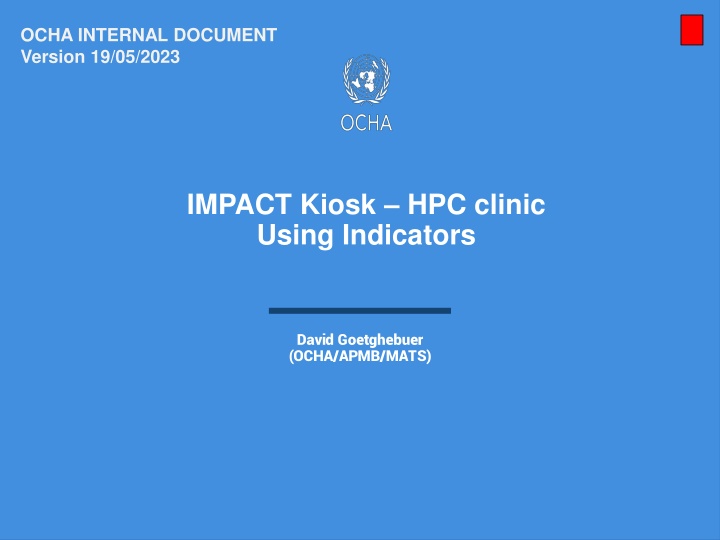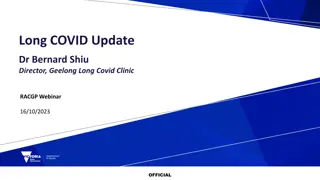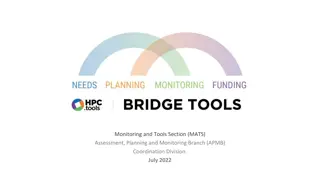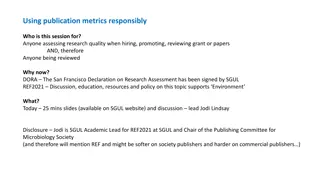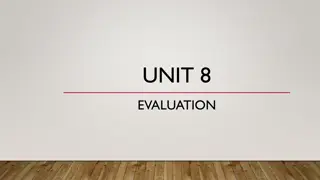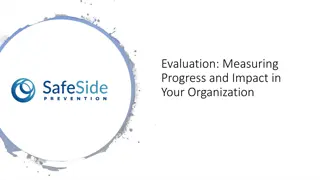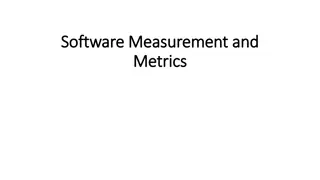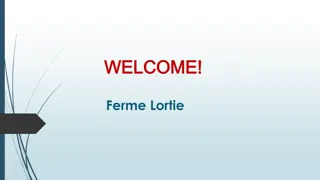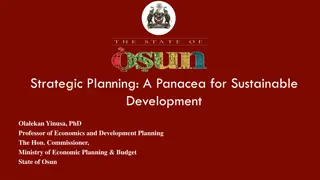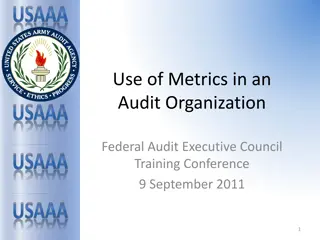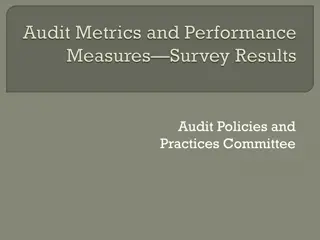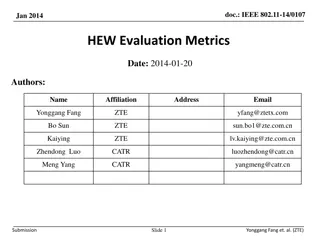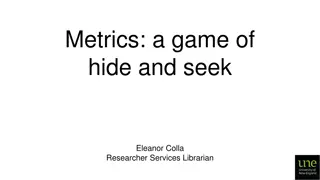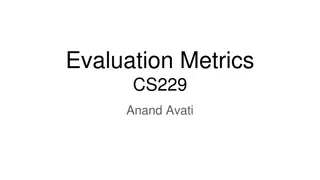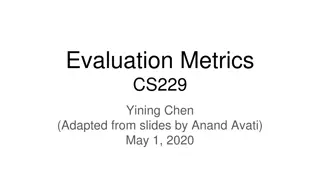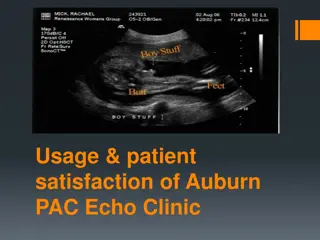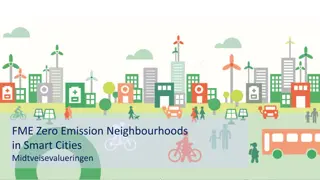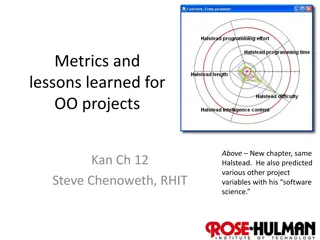Evaluation of OCHA Impact Kiosk Clinic Metrics and Strategic Planning
This document outlines the assessment of OCHA's impact kiosk clinic metrics, evaluating indicators such as distribution of household kits, vaccination coverage, access to pensions, and shelter distribution. It discusses various methodologies for measuring and reporting on interventions in humanitarian settings, including the use of snapshots, periodic measurements, and storytelling through data manipulation. Furthermore, it touches upon the significance of vaccination in addressing different COVID-19 variants. The content delves into the terminology, milestones, and targets set by OCHA for effective planning and implementation of aid initiatives.
Download Presentation

Please find below an Image/Link to download the presentation.
The content on the website is provided AS IS for your information and personal use only. It may not be sold, licensed, or shared on other websites without obtaining consent from the author.If you encounter any issues during the download, it is possible that the publisher has removed the file from their server.
You are allowed to download the files provided on this website for personal or commercial use, subject to the condition that they are used lawfully. All files are the property of their respective owners.
The content on the website is provided AS IS for your information and personal use only. It may not be sold, licensed, or shared on other websites without obtaining consent from the author.
E N D
Presentation Transcript
OCHA INTERNAL DOCUMENT Version 19/05/2023 IMPACT Kiosk HPC clinic Using Indicators David Goetghebuer (OCHA/APMB/MATS)
Need and baseline OCHA value before action intended value post action actual value post action ideal target Indicator need baseline target result Number of household kits distributed 20,000 5,000 4,800 0 ? % coverage of measles vaccination 50% 90% 95% 100% ? Number of people who have access to their pensions 1.2 million 635,800 700,000 750,000 Number of shelters distributed ? ? ? 10,000
OCHA Terminology Milestone Intermediate target Mid-Year 2,500 Indicator label unit kitX need baseline target result Performance Number of household kits distributed 20,000 0 5,000 4,800 96% DATA RANGE Acceptable values METADATA Where ? Who did ? Period of time (from when to when) ? Date ? Who reports ? Who validates ? Date of validation ? If percentage: numerator and denominator
OCHA Time reference of an indicator: Snapshot: The measure of the indicator corresponds to a given moment. Indicator Value 10,000 # of IDP Households in camp X Value Indicator 10% % of households having a tent Periodic: The measure of the indicator corresponds to a period of time. Indicator # of new IDP arrivals in camp X over the last 6 months Value 45,000 Indicator Value 7,000 # tents distributed during the project
Three ways of telling one story: In camp X, there is an IDP population of 50,000 persons, in 10,000 households. Among them 1,000 households (10%) have tents, and 9,000 do not. We plan to distribute 7,000 tents that should benefit 7,000 households. OCHA I: Using a periodic # indicator: the action is measured by the indicator. Action Indicator Need ? Target ? # of tents distributed Distribute tents to IDP households in camp X 7,000 9,000 II: Using a snapshot % indicator: the action is measured by the evolution of the indicator. Action Indicator Baseline Target % of households having a tent Distribute tents to IDP households in camp X ? 80% ? 10% III: Using a snapshot # indicator: the action is measured by the evolution of the indicator. Action Indicator Need Baseline Target # of households having a tent Distribute tents to IDP households in camp X 1,000 ? ? 10,000 ? 8,000
Figures can be manipulated - 1 OCHA Population non vaccinated Population vaccinated 70% of people who get Covid have Omicron 50% of people who get Covid have Omicron People vaccinated are more at risk !!!??? 100 100 non vaccinated vaccinated 80 covid Delta 50% 40 Omicron 10 covid Delta 70% 7 Omicron
Figures can be manipulated - 2 OCHA HIV prevalence in Kenya: Fight against AIDS is efficient !!!??? 2022: 4% 2021: 5% New cases 5% HIV+ 5% HIV+ 4% HIV+ deceased
Aggregation / Disaggregation #1 OCHA Blankets are distributed In 2 different areas Area B Area A Area A: 5 Area B: 6 Total blankets ? Total beneficiaries ? 5 + 6 = 11 SUM In one area to 2 different groups Project A (priority): 7 Project B (others): 6 Total blankets ? Total beneficiaries ? 7 + 6 = 13 SUM In one area to one group, twice Project A (1st round): 8 Project B (2nd round): 7 Total blankets ? Total beneficiaries ? 8 + 7 = 15 SUM Max (8,7) = 8 MAX
Aggregation / Disaggregation #2 OCHA Counting beneficiaries: in one area, different items, to overlaping groups Project A (blankets): 5 Project B (water): 6 Total beneficiaries ? Ideally: Total beneficiaries = r.A + r.B Overlap = 5 + 6 2 = 9 Practically: Total beneficiaries = MAX (r.A, r.B) MAX = MAX (5,6) = 6
Aggregation / Disaggregation #3 OCHA Counting beneficiaries: in one area, same item, same group, over time January January : 3,000 February : 2,500 March : 3,500 Total beneficiaries January - March ? February March Total beneficiaries = MAX (r.Jan, r.Feb, r.Mar) = MAX (3000,2500,3500) = 3,500
Aggregation / Disaggregation #4 OCHA Counting items over time: in one area, same item, same group, over time 5 5 January January : 5 February : 4 March : 3 Total items January March ? 4 9 February 3 12 March Total items = SUM (r.Jan, r.Feb, r.Mar) = 5 + 4 + 3 = 12 Monthly values Cumulative values
Aggregation / Disaggregation #5 OCHA Data collection: Measures Reporting: Display value January February March April 68 26 435 SUM 96 LAST ? 132 12 132 MAX May June 101 96 72 AVG
Aggregation / Disaggregation #6 OCHA Data collection: Measures Reporting: Display value January February March April 68 26 SUM the displayed value is the sum of all the periodic values 132 12 435 May June 101 96 Example: # of blankets distributed during each monitoring period
Aggregation / Disaggregation #7 OCHA Data collection: Measures Reporting: Display value January February March April 68 85 LAST the displayed value is the last validated periodic value 114 136 228 May June 204 228 Example: # of blankets distributed since start of project
Aggregation / Disaggregation #8 OCHA Data collection: Measures Reporting: Display value January February March April 68 26 MAX the displayed value is the maximal value found across all periodic values 132 12 132 May June 101 96 Example: # of people reached by the project
Aggregation / Disaggregation #9 OCHA Data collection: Measures Reporting: Display value January February March April 68 26 AVG the displayed value is the average of all the periodic values 132 12 72 May June 101 96 Example: # of litres of water used per month in a camp of IDPs
Aggregation / Disaggregation #10 OCHA Aggregating 2 indicators expressed as percentages: two areas, same item Camp B Camp A % of households having decent shelters Camp A : 50% (5 vs 10) Camp B: 90% (90 vs 100) Camps A + B ? Method: %SUM Total value = ((5 + 90) / (10 + 100)) = 95 / 110 = 86%
OCHA Does last year s final value make next year baseline? Objective 2020 Autonomous food availability Indicator Baseline Target 30% Result 60% % of affected households having autonomous food consumption score > 35 65% ? Baseline Target Objective 2021 Autonomous food availability Indicator Result % of affected households having autonomous food consumption score > 35 60% 80%
OCHA Does last year s final value make next year baseline? Action 2020 Distribute blankets Indicator Baseline 0 Target 4,800 Result 4,800 # of blankets distributed (in 2020) ? Action 2021 Distribute blankets Indicator Baseline 0 Target Result 3,000 # of blankets distributed (in 2021)
OCHA Reporting results against funding FTS reports funds for HRP / NFI cluster: 1,000,000 USD The Cluster coordinator gathers reports from the Actors: - Oxfam : 10,000 kits distributed - SCF: 8,000 kits distributed - ICRC: 12,000 kits distributed - Caritas: 5,000 kits distributed OUT of HRP !! How to bring results against funding ? (10,000 + 8,000 + 5,000) = 23,000 kits distributed with 1 MUSD 12,000 kits distributed out of HRP
OCHA Monitoring the collective response: Who is in and who is out We don t participate to the IASC plan HRP aligned Not aligned We participate, and also do things out of the plan
